Marble quarry
Our first fieldtrip (in the first project week in Norway, Monday 12.04), went to Brønnøy kalk, which is a big marble quarry located east in the Geopark. The great weather made the day perfect for both pupils and cameramen.
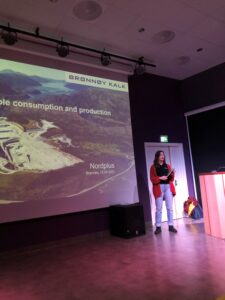
Bergliot- geologist at Brønnøy kalk
Bergliot, who is one of the geologists at Brønnøy kalk, started the day with a short presentation of the marble quarry. You can have a look of the presentation on this VIDEO. It contains both the presentation she had in the auditorium and our day in the field. Here is the PowerPoint Presentation from Brønnøy kalk. Please use it for the poster presentation. It will give you lots of interesting fun facts about our consume of mineral resources, but also how the company is working towards sustainable mining.
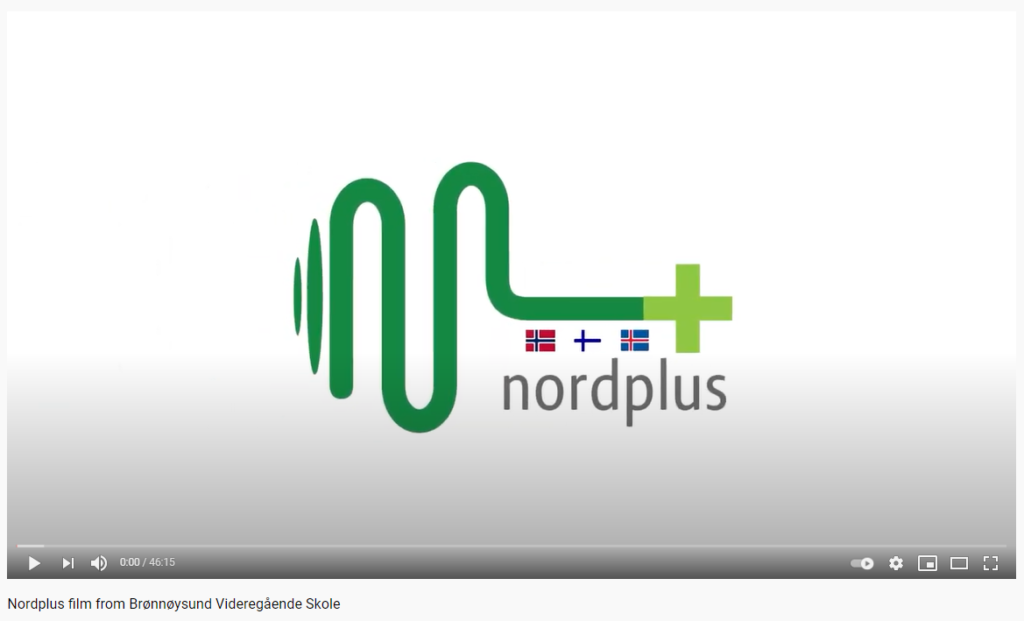
The video is made by Adrian Johansen and Kornelius Harvey Løkås. Both are pupils at Brønnøysund upper secondary school.
The marble quarry, named Akselberg, is about 30 minutes drive from Brønnøysund city. The extraction of calcite marble from Akselberg open pit mine started in 1997 and is a cornerstone company in the region. Brønnøy kalk extracts approximately 2 million tonnes of calcite marble every year. The calcite marble is shipped from the quarry in Brønnøysund to Molde, a city located south from us. The raw material is here further on processed and used as fillers and coating in the paper industry. For example: magazines, books, cardboard packing, etc. In fact, the limestone from Brønnøy kalk is part of the everyday life of 100 million people in Europe!

To summarize some of Brønnøy kalk sustainability goals for the future: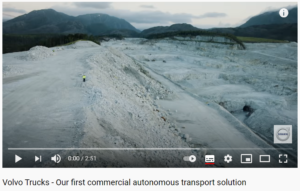
- Constantly seek to increase utililzation
- Implement TSM (Towards Sustainable Mining)
- Transformation from fossil to non-fossil fuel
- Autonomous transport. If you click on the picture to the right you can see how this works.
We split the pupils in two groups on Monday. The first group went with Bergliot to have a guided tour in the marble quarry. Inside a bus she showed them the different bedrock in the open pit, the different mining process and how the dynamite loosens the bench wall from the side of the quarry, the machines, and the established roads. Further on they went inside in one of the tunnels that leads to the fjord. From the fjord the raw material is shipped to another company and processed into liquid marble for the paper industry. After the guided tour they also did some water samples from one of the lakes connected to the quarry.
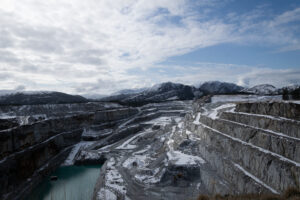
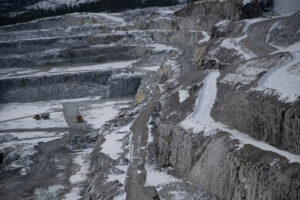
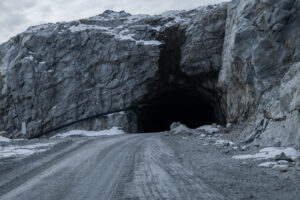

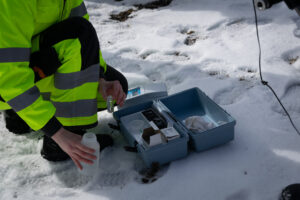
The second group went with Trollfjell Geopark to a marble cave nearby, called Oterhola. This is a small marble cave situated a few meters above sea level. Together with two larger caves in the marble quarry, the three caves formed a linear drainage routh beneath the late-glacial icesheet (approximately 11 000 years ago) and functioned as a glacial spring towards the fjord. Oterhola bears ample evidence of being a past habitat for marine organisms when it was active, as seen by traces of boring organisms (molluscs, sponges). Numerous mollusc shells and fish bones is all over the floor sediments. This can be traced back to a big submarine landslide called Storegga Slide, which caused a huge tsunami in the western part of Norway. The scientist are still waiting to date the old molluscs inside the cave, to proof that the shells and bones were transported by this tsunami.
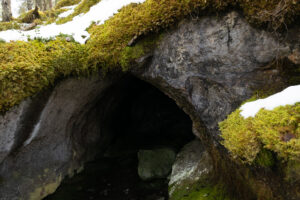
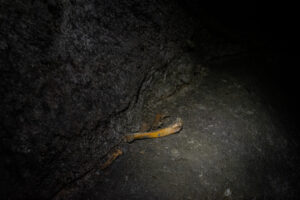

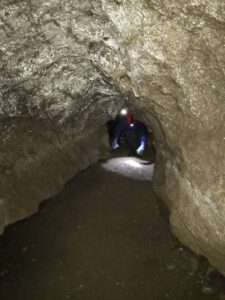
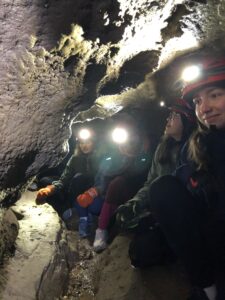
The learning outcome for the day:
- Mining processes
- Marble as a natural resource
- What we can produce of marble
- Environmental challenges
- Resource utilization
- Sustainable solutions
- How to do a water sample of
- Marble caves
- The Last Ice Age
Mining poster click here: Factsheet Mining
